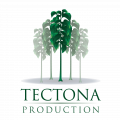The navigation of the Panama Canal and the trade and financial activities associated with it are the focal point of the country’s economy.
In addition, a number of tropical agricultural products are grown and copper is extracted from the tenants in Cerro Colorado.
Panama is, along with Costa Rica, the most developed economies in the sub-region.
The economy is mainly based on a well-developed service sector, in particular services related to the Panama Canal, financial services, the Colon free zone, insurance, container ports and tourism, which contribute ¾ of GDP.
A decline in exports from the free zone and agriculture, as well as the US withdrawal from the military, pushed economic growth in 2000-2003.
In 2004 and 2005, growth increased, thanks to increased exports and a sharp rise in the construction sector due to tax incentives.
In 2004 and 2005, growth was 7.6% and 6.4%, respectively. The agricultural and fisheries sectors, which are responsible for a large part of the employment in the country, are experiencing increasing demand.
Unemployment, which was 9.6% in 2005, is falling despite the high level and is expected to fall further. Despite the growth of the economy, the proportion of the population living in poverty is unchanged. Social and economic structures prevent the distribution of resources and thus contribute to the great inequality in income distribution.
About 40% of the population lives in poverty, 16.6% in extreme poverty and it is especially the rural population and people of Native American descent who are affected. Inflation in 2005 reached its highest level in decades with 3.4%, mainly due to high oil prices.
The development debt in 2005 was DKK 9.5 billion. kr.

